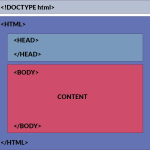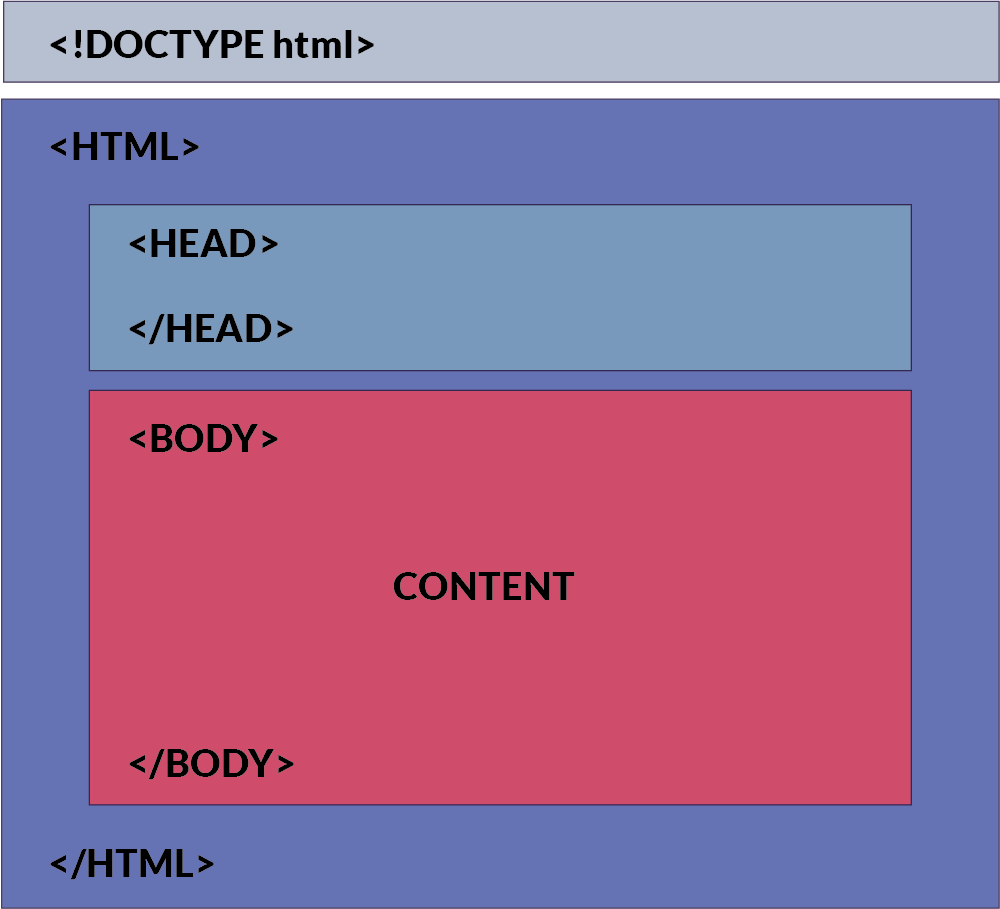-
What is HTML?
-
Why HTML Is Essential To Learn?
Foundation of Web Development: HTML is the backbone of web development. It provides the structure and organization for web pages, allowing developers to create content that is well-structured and semantically meaningful.
Universal Language of the Web: HTML is the standard markup language used on the World Wide Web. Understanding HTML enables developers to create web pages that are compatible with all web browsers and accessible to a wide range of users.
Gateway to Front-end Development: HTML is often the first language that aspiring web developers learn. It serves as a stepping stone to understanding other front-end technologies such as CSS (for styling) and JavaScript (for interactivity), forming the basis for building modern, dynamic websites and web applications.
Accessibility: Properly structured HTML documents are essential for making web content accessible to people with disabilities. By learning HTML, developers can create accessible web pages that comply with web accessibility standards and guidelines, ensuring that everyone, regardless of their abilities, can access and interact with the content.
SEO (Search Engine Optimization): HTML plays a crucial role in search engine optimization. By using semantic HTML elements and attributes appropriately, developers can improve the visibility of their web pages in search engine results, making it easier for users to find their content online.
Content Creation and Publishing: Whether you’re a blogger, content creator, or business owner, understanding HTML allows you to create and publish content on the web without relying solely on pre-built templates or website builders. This gives you more control over the look and feel of your content and the ability to customize it to suit your needs.
-
Who Should Learn HTML?
Web Developers: HTML is a fundamental skill for web developers, whether they specialize in front-end, back-end, or full-stack development. Understanding HTML allows developers to create the structure and layout of web pages and integrate them with other technologies such as CSS and JavaScript.
Graphic Designers: Graphic designers who work on web projects can benefit from learning HTML to understand how their designs are translated into web pages. This understanding allows them to create designs that are practical and feasible for implementation on the web.
Content Creators: Bloggers, writers, and content creators who publish content on the web can benefit from learning HTML to format their content effectively. Knowing HTML allows them to customize the appearance of their content and add multimedia elements such as images and videos.
Entrepreneurs and Business Owners: Entrepreneurs and business owners who manage their websites or online stores can benefit from learning HTML to make basic modifications and updates to their web content without relying on external developers.
Students: Students interested in pursuing careers in technology, web development, design, or digital marketing can benefit from learning HTML as a foundational skill. It provides a solid understanding of how the web works and lays the groundwork for learning more advanced web technologies.
Anyone Interested in Technology: Learning HTML is valuable for anyone curious about how websites are created and interested in understanding the basics of web development. It’s a valuable skill in today’s digital age, even for individuals outside of the tech industry.
-
The Future Of HTML
Continued Evolution: HTML is continuously evolving to meet the demands of modern web development. The HTML Working Group, part of the World Wide Web Consortium (W3C), regularly updates and enhances the HTML specification to incorporate new features, improve performance, and address emerging trends in web development.
Support for New Technologies: HTML is at the forefront of supporting new web technologies and standards. For example, HTML5 introduced a wealth of new features such as semantic elements, multimedia support, canvas for graphics, and APIs for interactivity, which have become integral to modern web development.
Accessibility and Inclusivity: HTML plays a crucial role in ensuring accessibility and inclusivity on the web. As the importance of accessibility continues to grow, HTML will continue to evolve to provide better support for accessibility features and standards, making the web more usable for everyone.
Responsive Web Design: With the increasing prevalence of mobile devices and diverse screen sizes, responsive web design has become essential. HTML provides the foundation for creating flexible and responsive layouts that adapt to different devices, screen sizes, and orientations, ensuring a consistent user experience across all platforms.
Integration with Emerging Technologies: HTML is integrating with emerging technologies such as virtual reality (VR), augmented reality (AR), and the Internet of Things (IoT). New HTML features and APIs are being developed to enable developers to create immersive and interactive experiences that leverage these technologies.
Cross-platform Development: HTML enables cross-platform development, allowing developers to create web applications that run seamlessly on various devices and platforms, including desktops, laptops, smartphones, tablets, and even smart TVs and wearable devices. This cross-platform compatibility makes HTML a versatile and widely adopted technology for building web-based applications.
-
Server And Client
Server: Provides resources, services, or data in response to client requests over a network.
Client: Requests resources or services from servers and renders them for users in web browsers.

-
Web Page
A web page is a single document or file displayed in a web browser. It typically contains a combination of text, images, multimedia elements, hyperlinks, and styling information (provided by CSS) that is presented in a visually cohesive manner.
Web pages are written using markup languages such as HTML (Hypertext Markup Language), which define the structure and content of the page. Other technologies like CSS (Cascading Style Sheets) and JavaScript can be used to enhance the appearance and interactivity of web pages.
Examples of web pages include articles on news websites, product pages on e-commerce sites, blog posts, and about pages on personal websites.
-
Website
A website is a collection of related web pages that are interconnected and hosted on a web server. Websites are accessible over the internet and are typically organized into a hierarchical structure, with a homepage serving as the entry point to the site.
Websites serve various purposes, including providing information, offering products or services, facilitating communication, and hosting online communities. They can be static, containing fixed content that rarely changes, or dynamic, with content that is frequently updated or generated dynamically based on user interactions.
Websites can range in size from simple personal blogs to complex e-commerce platforms, social networks, and enterprise web applications.
-
URL
A URL is a standardized address used to identify and locate resources on the internet. It specifies the protocol used to access the resource (such as HTTP or HTTPS), the domain name or IP address of the server hosting the resource, and the path to the specific resource on the server. A url typically consists of several components:
Protocol: specifies the communication protocol used to access the resource, such as HTTP (hypertext transfer protocol) or HTTPS (HTTP secure).
Domain name: identifies the specific server or host where the resource is located. Domain names are human-readable labels that correspond to numeric IP addresses.
Path: specifies the location of the resource on the server’s file system or within the website’s directory structure. It can include directories, filenames, and query parameters.
Query parameters: optional parameters that are appended to the url to pass additional information to the server, such as search queries or form data.
Example of a url: https://www.expertscomputeracademy.com/learn/html/ Protocol: HTTPS Domain name: www.expertscomputeracademy.com.Com and Path: learn/html/
Editor
-
In the context of HTML, an editor refers to a software tool or application used to create, write, edit, and manage HTML documents. HTML editors come in various forms, ranging from simple text editors to advanced integrated development environments (IDEs) specifically designed for web development. Here are some common types of HTML editors
Editors List
Text Editors IDEs Online HTML Editors WYSIWYG Editors Notepad++ (Windows)
Sublime Text (Windows, macOS, Linux)
Atom (Windows, macOS, Linux)
Visual Studio Code
JetBrains WebStorm
Adobe Dreamweaver
Microsoft Visual Studio
Eclipse IDE
Aptana Studio
CodePen
JSFiddle
JS Bin
Plunker
StackBlitz
Adobe Dreamweaver
Microsoft Expression Web
BlueGriffon
KompoZer
Pinegrow
Internet Browsers
Internet browsers, also known simply as web browsers, are software applications used to access and view content on the World Wide Web. They allow users to navigate the internet by retrieving and displaying web pages, files, images, videos, and other multimedia content from web servers.
Internet Browsers Features
Rendering Engine: Browsers use rendering engines to interpret and display web content. The rendering engine processes HTML, CSS, JavaScript, and other web technologies to render web pages as they appear in the browser window.
User Interface: Browsers provide user interfaces that include address bars, navigation buttons (such as back, forward, and refresh), bookmarks, and settings menus. The user interface allows users to interact with and control the browser’s functionality.
Tabbed Browsing: Tabbed browsing allows users to open multiple web pages within a single browser window, each in its own tab. This feature enables users to switch between different web pages without opening multiple browser windows.
Bookmarks and History: Browsers allow users to save and organize bookmarks (or favorites) for easy access to frequently visited websites. They also maintain a history of visited web pages, enabling users to revisit previously viewed content.
Extensions and Add-ons: Many browsers support extensions or add-ons, which are small software modules that extend the browser’s functionality. Extensions can add features such as ad blocking, password management, and developer tools to enhance the browsing experience.
Security Features: Browsers incorporate security features to protect users from malicious websites, phishing attacks, and other online threats. These features may include built-in malware detection, phishing protection, and secure browsing modes.
Cross-Platform Compatibility: Most modern browsers are cross-platform, meaning they are available for multiple operating systems such as Windows, macOS, Linux, Android, and iOS. This allows users to access the web consistently across different devices and platforms.
Popular Internet Browsers
Google Chrome, Mozilla Firefox, Microsoft Edge (formerly Internet Explorer), Apple Safari Opera
HTML, or Hypertext Markup Language, is the standard markup language used to create and design documents on the World Wide Web. It’s not a programming language but rather a markup language that defines the structure and layout of content within a web page.
HTML documents can contain various types of content, including text, images, links, forms, multimedia, and more. By using different HTML elements and attributes, developers can create rich, interactive web pages that are accessible across different devices and browsers.
HTML works in conjunction with other web technologies such as CSS (Cascading Style Sheets) for styling and layout, and JavaScript for adding interactivity and dynamic behavior to web pages. Together, these technologies form the foundation of modern web development.










